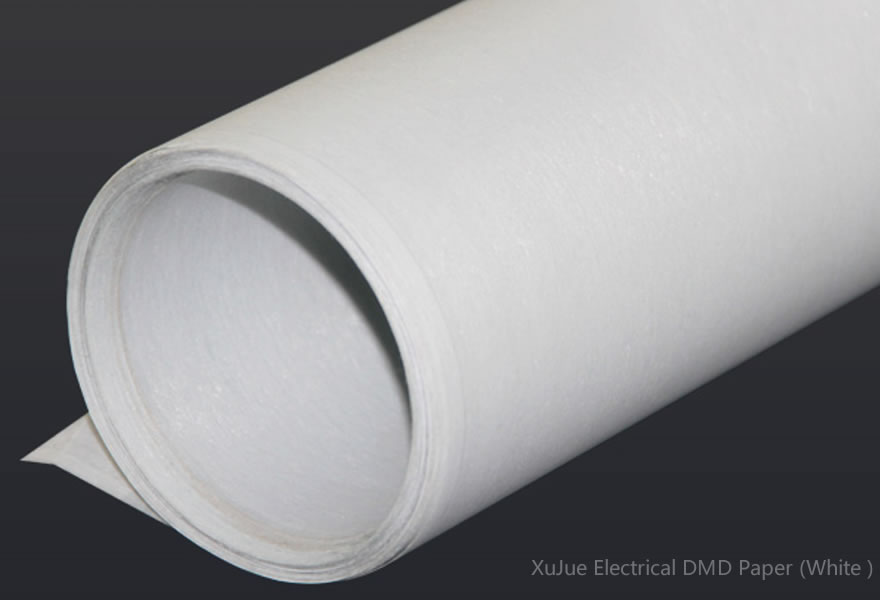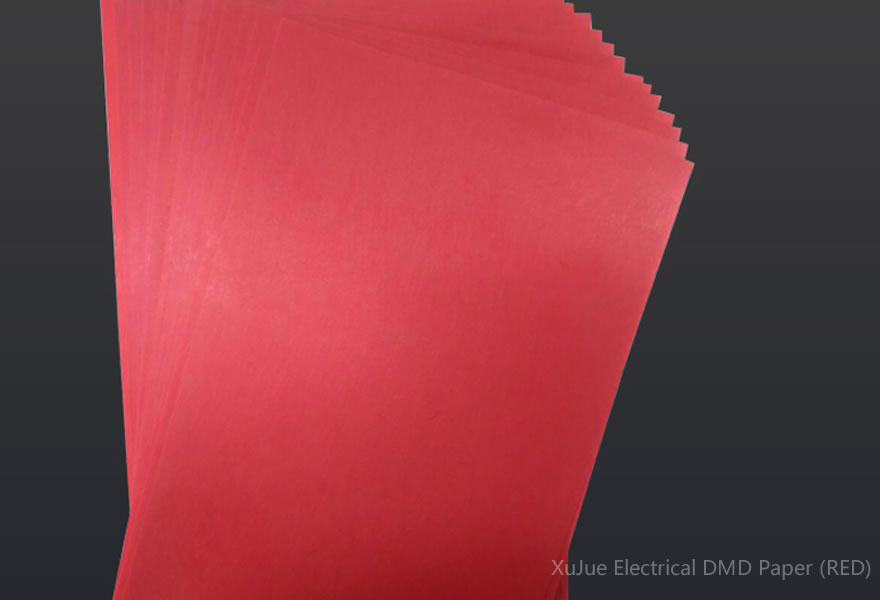Composition of DMD insulation paper DMD insulation paper (Dacron–Mylar–Dacron) is a three-layer flexible composite...
DMD insulation paper (Dacron–Mylar–Dacron) is a three-layer flexible composite made by bonding polyester non-woven fabric on both sides of a polyester film through high-temperature lamination. With a long-term thermal class of Class F (155 °C), DMD has become one of the most widely used soft insulation materials in motors, dry-type transformers, and reactors. Its strong suitability comes from its balanced structure, stable performance, and excellent processing compatibility.

This article analyzes DMD insulation from two perspectives: adaptability advantages and application logic.
DMD adopts a three-layer structure:
Polyester film (PET Film)
Provides high dielectric strength and ensures stable insulation between layers and turns.
Polyester non-woven fabric (PET Fleece)
Offers mechanical support, tear resistance, and flexibility, preventing cracking during bending, insertion, or wrapping.
Thermal lamination process
Creates a unified material that combines both flexibility and structural rigidity.
The synergy among the three layers is the fundamental reason why DMD is suitable for multiple insulation locations within electrical equipment.
With its Class F (155 °C) thermal rating, DMD is ideal for:
Small and medium motors
Dry-type distribution transformers
Reactors and inductors
It withstands both short-term temperature rises and long-term thermal loads, ensuring stable performance throughout device operation.
The non-woven layers make DMD processing-friendly:
Excellent for die-cutting (slot liners, phase insulation, pads)
Suitable for wrapping and winding as insulation tape
Strong varnish absorption, enhancing mechanical strength after curing
Compared with pure films or rigid laminates, DMD offers greater tolerance and flexibility during manufacturing.
Thanks to the polyester film core, DMD provides:
High breakdown voltage
Stable insulation resistance
Strong tolerance for uneven electric fields
This makes DMD ideal for electrical systems operating within the 400V–35kV range.
The non-woven layers give DMD outstanding:
Tear resistance
Shock absorption
Compression and resilience
DMD remains intact under coil insertion forces, transformer end-pressure, and reactor vibration.

DMD is not randomly placed inside equipment—it fulfills clear insulation functions. Its application follows three engineering-driven logics:
Where high dielectric strength is required, the polyester film acts as the main insulation:
Motor slot insulation — isolates coil conductors from the laminated core
Transformer interlayer insulation — controls voltage gradients within HV windings
Application logic:
Higher electric field → film-based insulation → choose DMD
Where bending, compression, or mechanical force occurs:
Slot insertion areas in motors
Spacer pads in dry-type transformers
Coil displacement zones in reactors
DMD’s non-woven structure absorbs stress and prevents material failure.
Application logic:
Higher mechanical stress → fiber-based buffering → choose DMD
DMD absorbs varnish well, which:
Strengthens the coil structure after impregnation
Enhances bonding in VPI-treated dry-type transformers
Prevents delamination or blistering during curing
Application logic:
Requiring strong bonding with insulating varnish → choose DMD

Although DMD is not the highest-temperature or highest-dielectric-strength material, it remains one of the most adaptable and widely used insulation materials.
Its value lies in:
Comprehensive structure (film + non-woven fabric)
Balanced properties (mechanical, electrical, thermal)
High processing compatibility (die-cut, wrap, varnish impregnation)
Cost-effectiveness for mass production
For motors, transformers, and reactors, DMD continues to be a fundamental material that aligns with the trends of equipment miniaturization, lightweight design, and automated manufacturing.
If you are interested in our products,, please send us a message and we will contact you as soon as we receive it. Email: info@ztaero.com whatsApp: +8616650273778